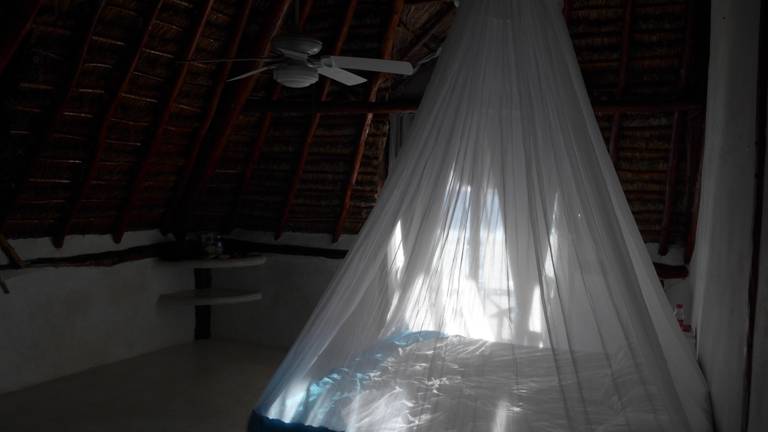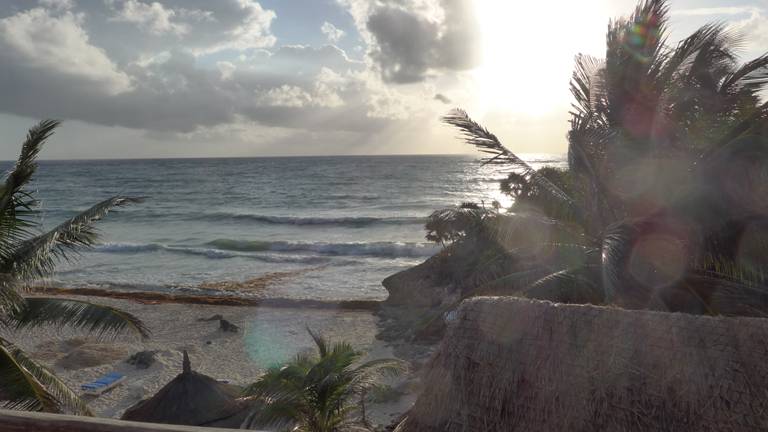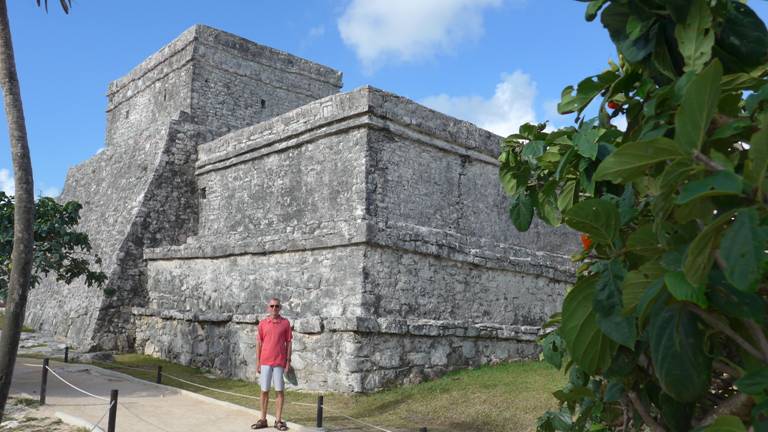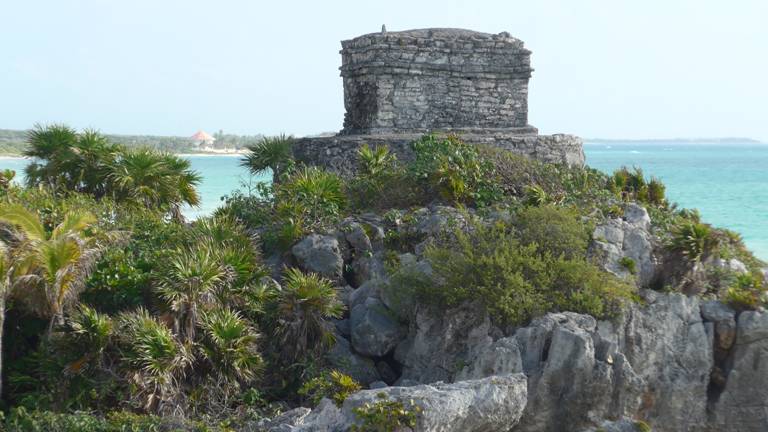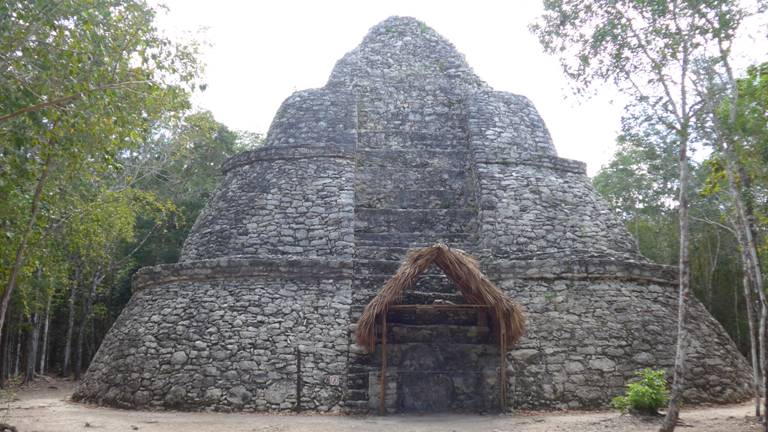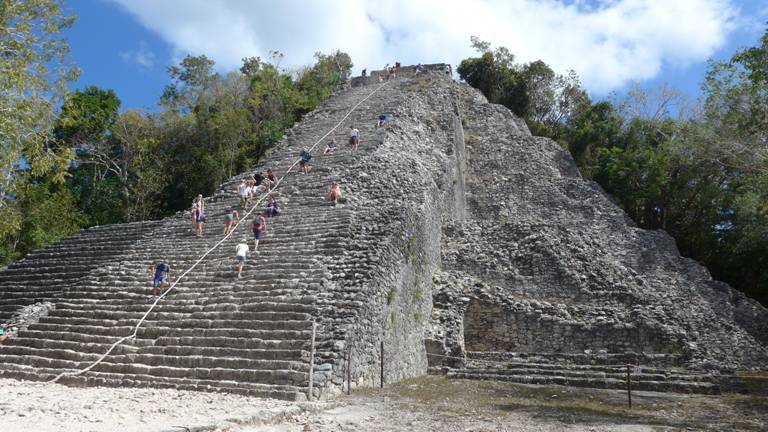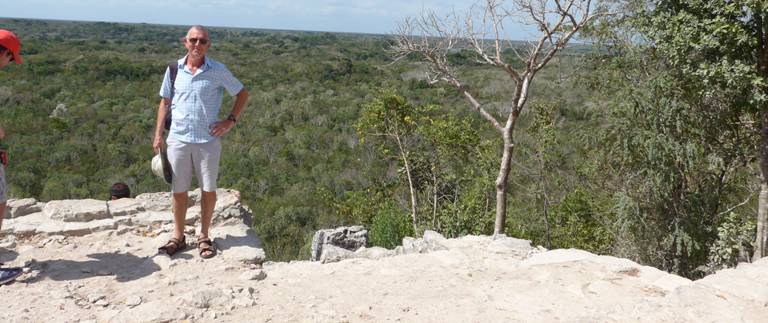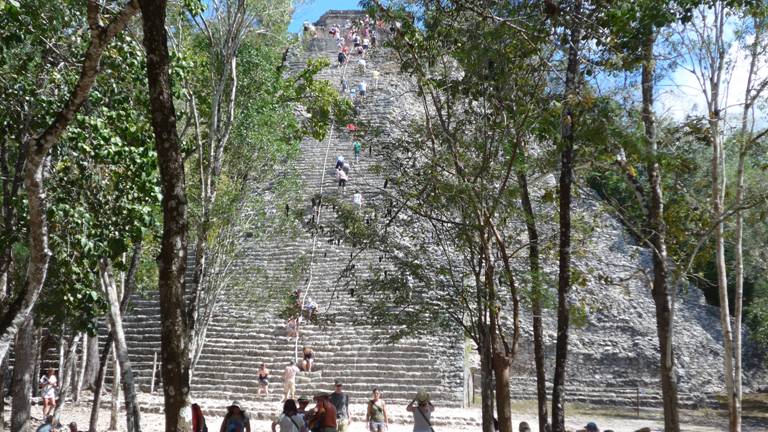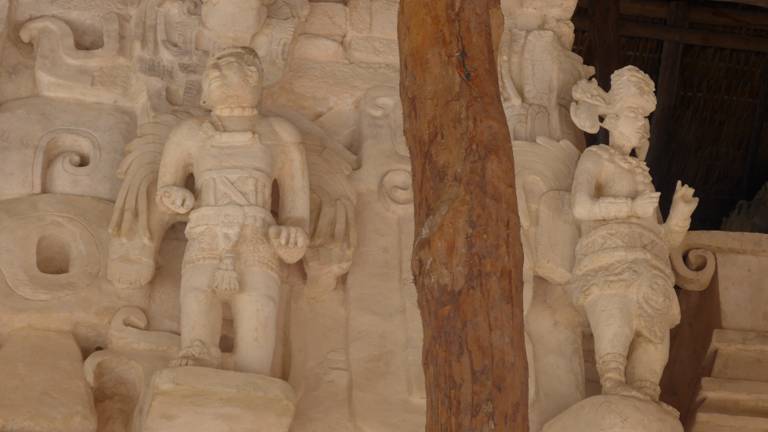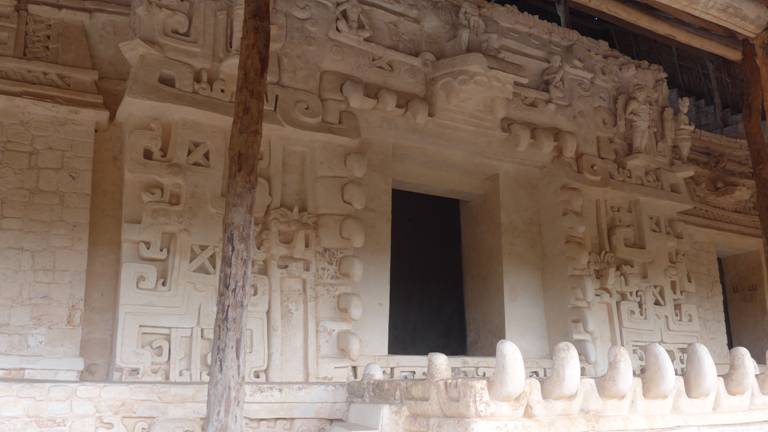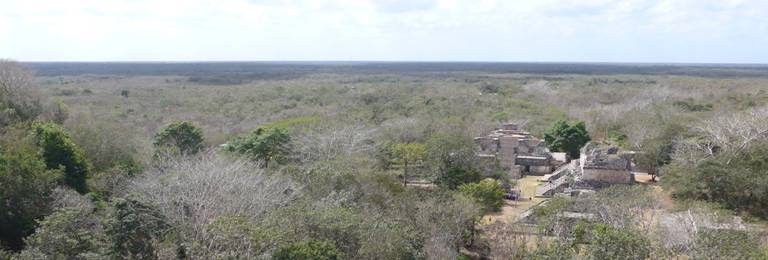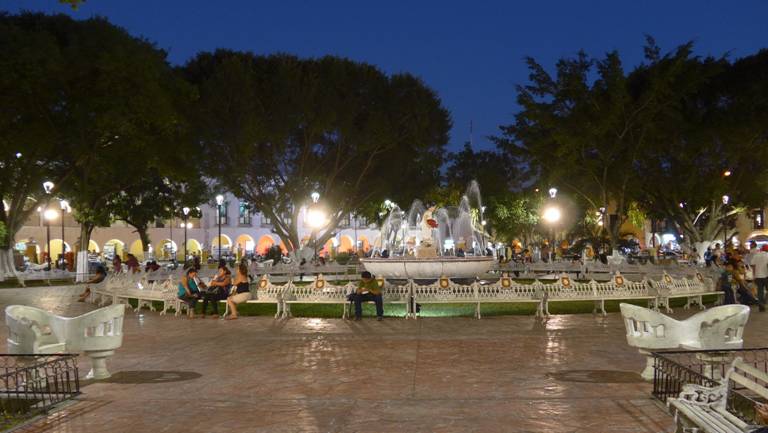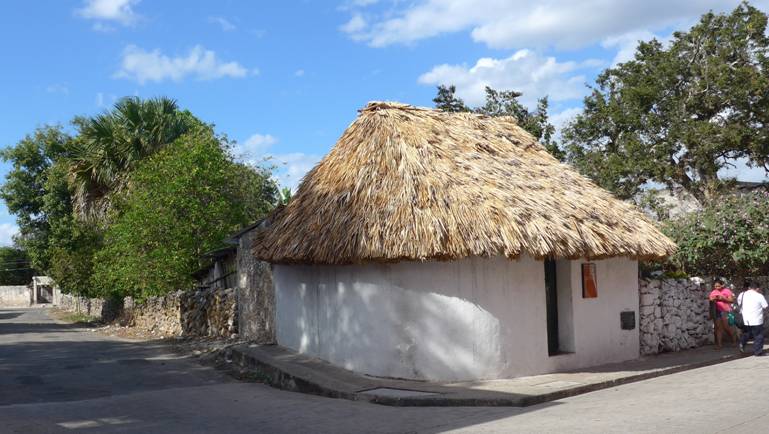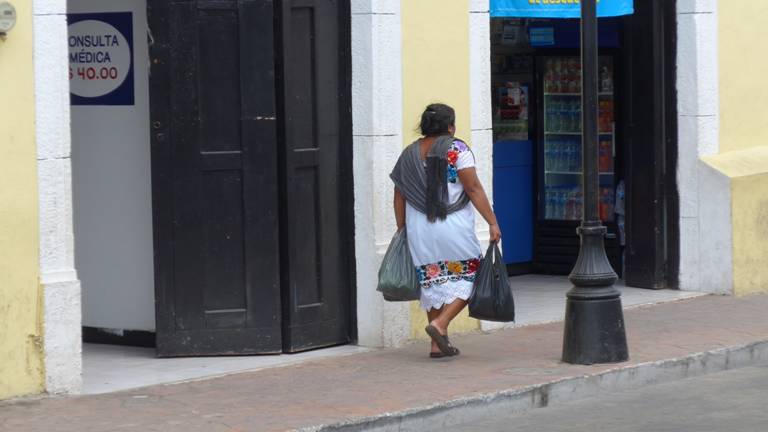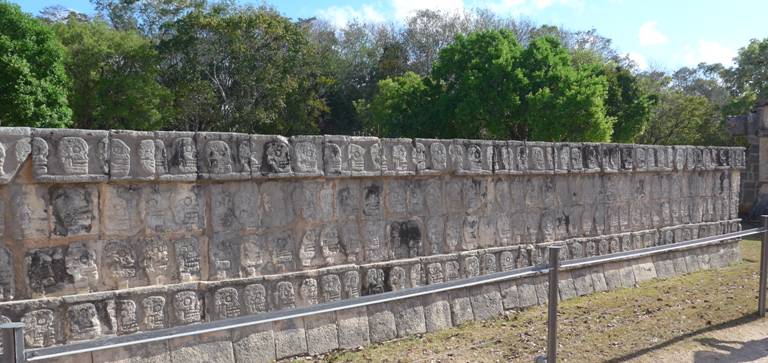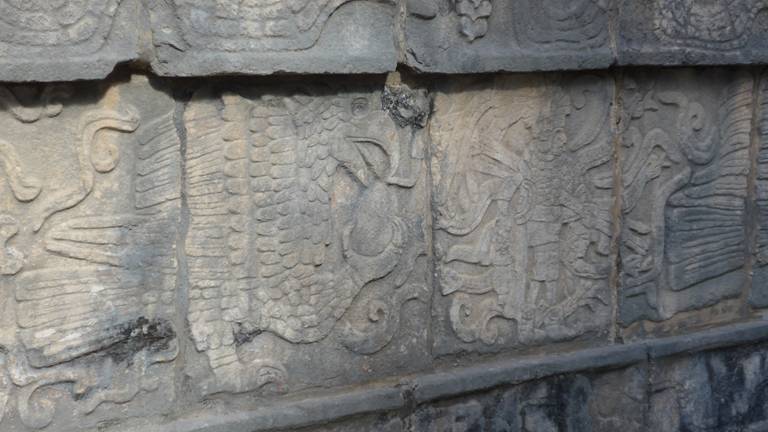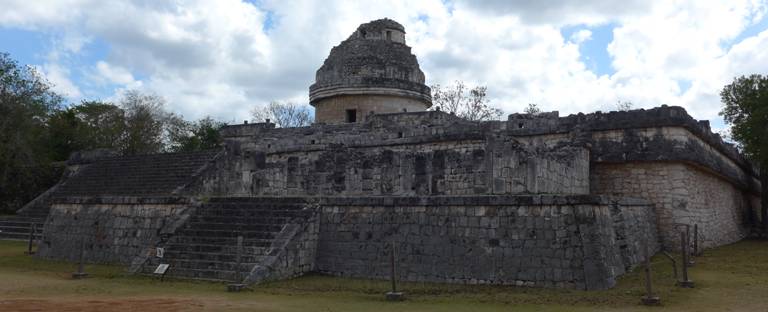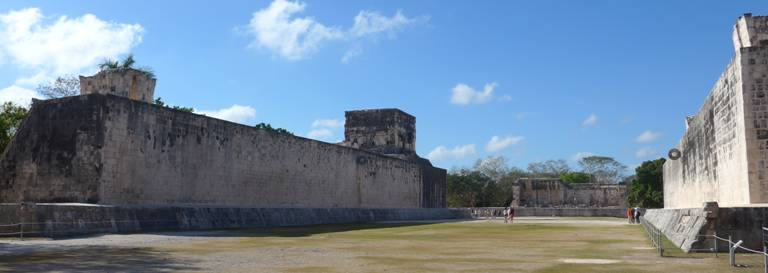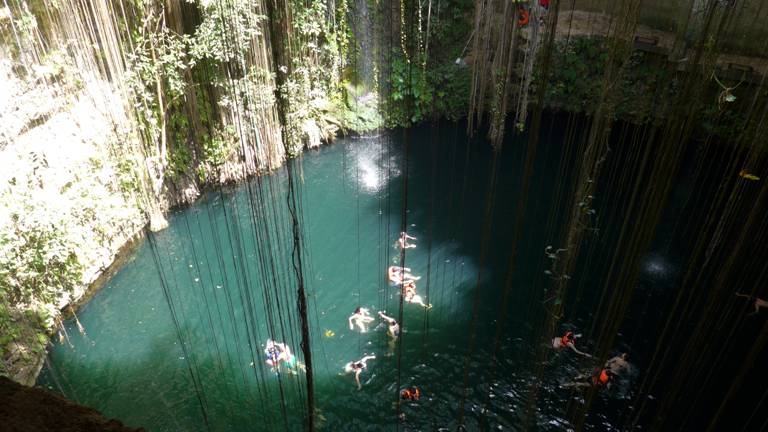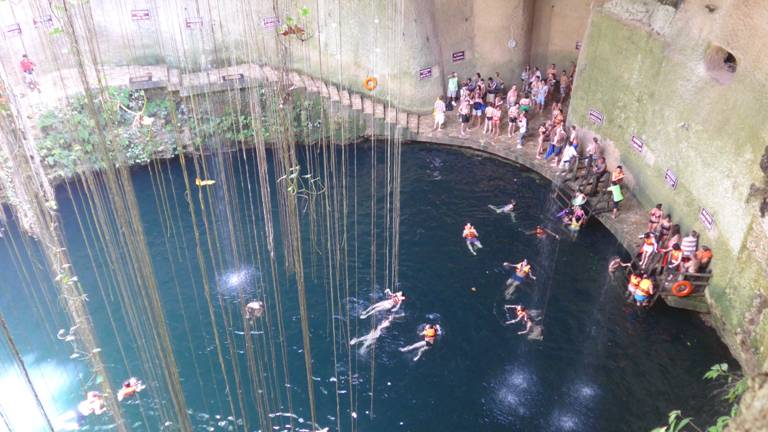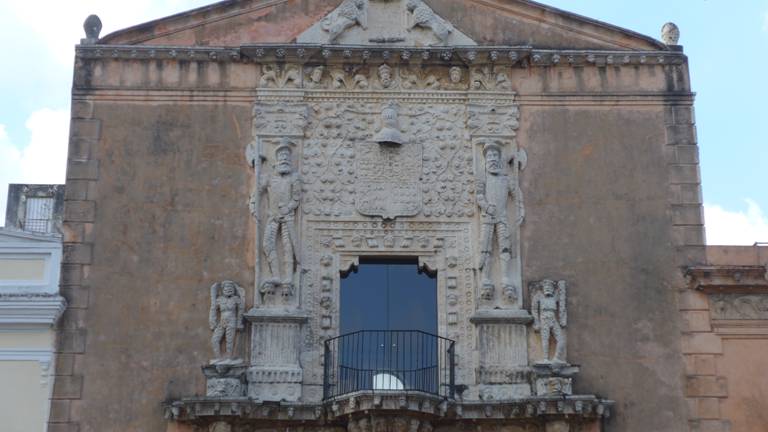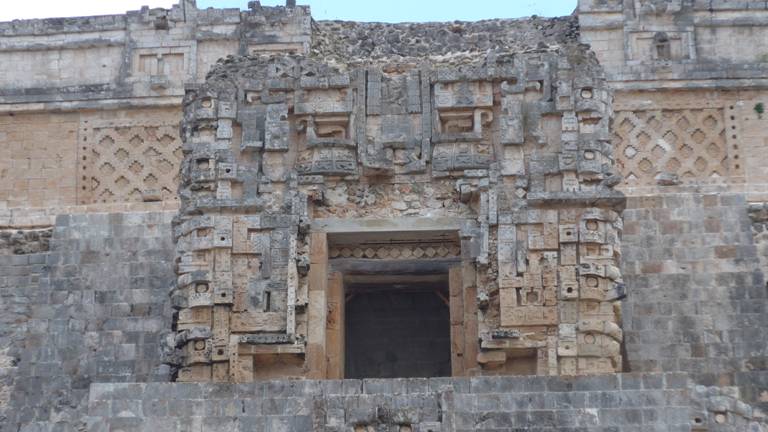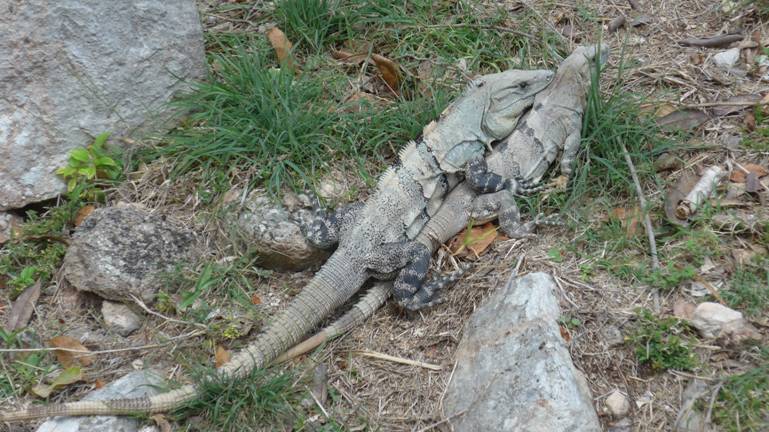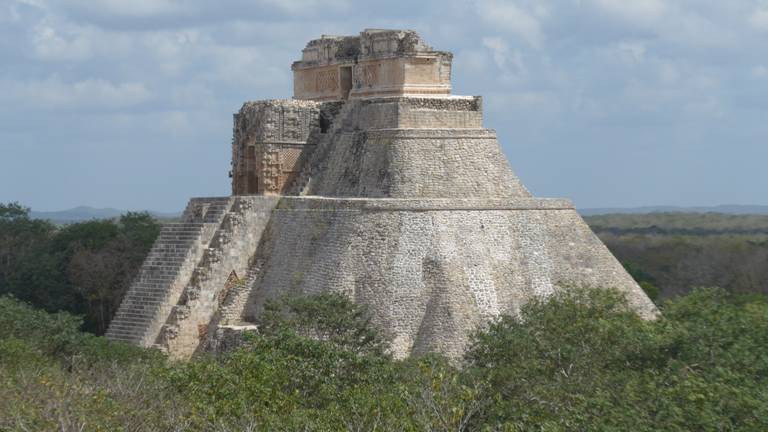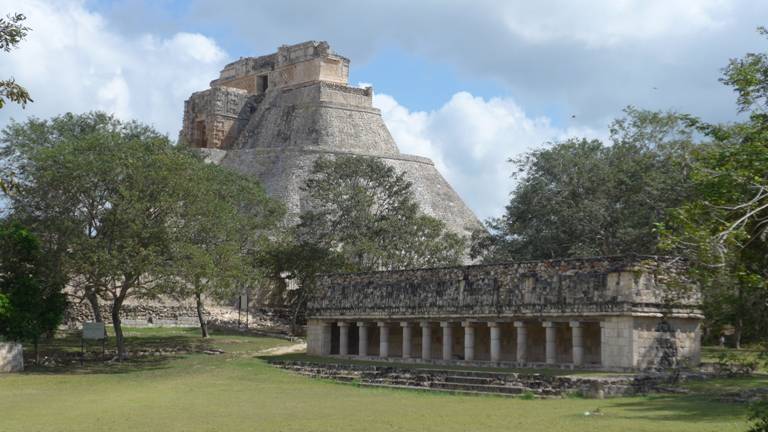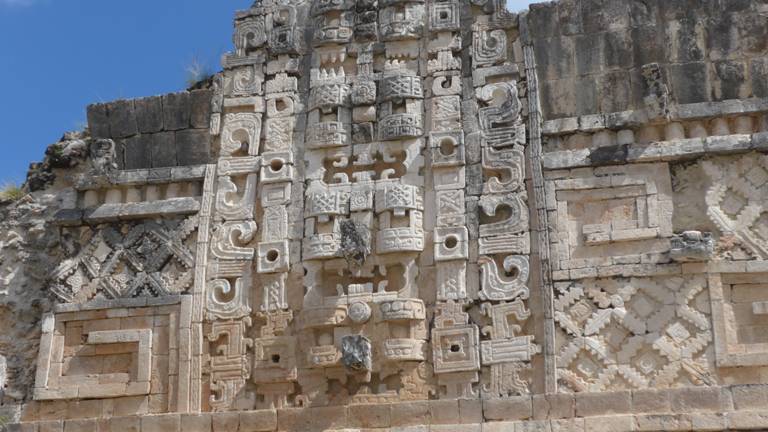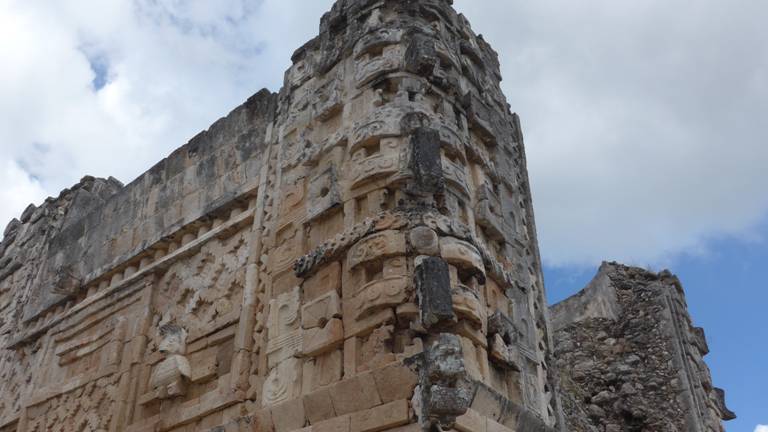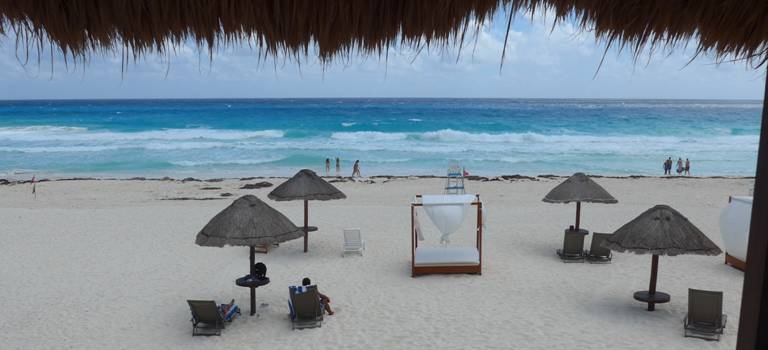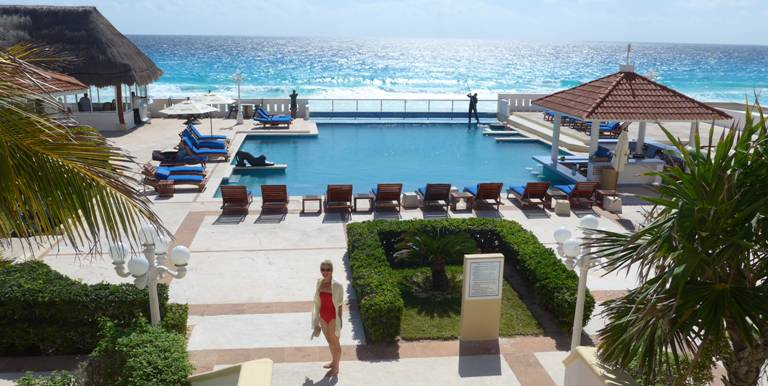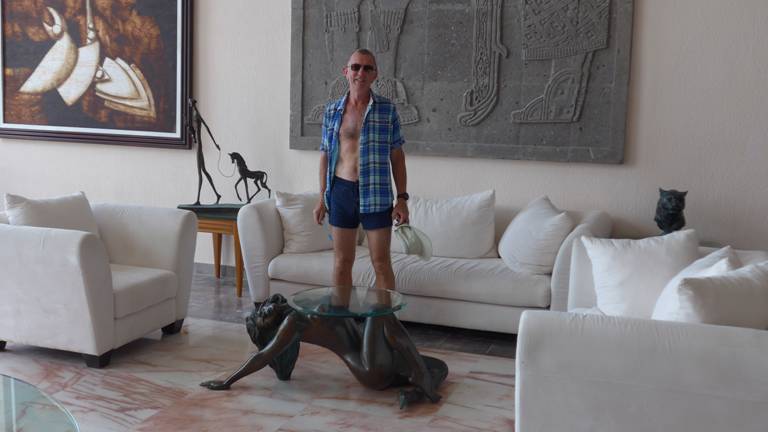Yucatan Peninsular, Mexico

|
After 8 days on the mainland exploring the sites of the Yucatan, we are back on the boat on Isla Mujeres and very happy to have managed to see so much in a fairly short time. We had a terrific time visiting 5 very different sets of Mayan ruins and experiencing a little of the flavour of local life beyond the tourist resorts. We also treated ourselves to a couple of nights by the beach and enjoyed the unaccustomed space of a large suite in our last hotel.
Our first 2 nights were spent by the sea a couple of hours’ driving south of Cancun in order to visit the wonderfully located site of Tulum. The structures here were relatively modest compared to other sites, but the walled city was built on the very edge of the sea and incorporated a little cove which the Mayans used as a port for goods moved by canoe up and down the coast. It was a lovely start to our journey and the beach hotel was distinctive with its breezy rafters and adobe style room. Our room in Tulum:
View from the room:
Tulum site:
Tulum with views out to sea:
We then moved inland to the older, jungle site of Coba where we had some good exercise walking between the spread out buildings. The highspot (literally!) was the structure known as the big mound and, at 42m high, the second highest in the Yucatan. Climbing to the top was permitted here, but it was especially challenging coming back down the steep, worn and uneven steps. Rounded pyramid in Coba:
The steps up Coba’s grand pyramid:
View from the top:
And through the trees:
We drove on the very straight and empty local roads to the attractive small town of Valladolid from where we visited the fascinating and compact site of Ek Balam. Its stand out structure was one of our favourites – a spectacular and huge “acropolis” building with terraces leading off from the steps to the top. These had many stucco figures, sculptures and geometric carvings and a magnificent jaguar’s mouth surrounded by large teeth. There was a wonderful view from the top over the site and the thick vegetation of the Yucatan plateau. Ek Balam’s main pyramid with terraces off (thatched shelters to protect the carvings):
Figures on the terraces:
Doorway symbolising a giant jaguar’s mouth:
View from the top towards more ruins:
Ek Balam:
We liked Valladolid too and were intrigued to see that many of the local Mayan ladies still wear the pretty, traditional embroidered white dresses on an every day basis. At supper that night we had “guacamole en mesa” as a starter. This involved the waiter smushing avocados at the table in a heavy iron pot and it couldn’t have been any fresher as a result. We shall miss the fantastic guacamole in Mexico (not to mention the very reasonable food and drink prices). Evening in the main square:
Trying out the seating:
A street in Valladolid:
A restored “na” (Mayan house) in Valladolid:
Lady in traditional dress and shawl:
We had decided to make a particularly early start the next day in order to be at the most famous site of Chichen Itza at opening time to avoid the tourist bus crowds. However we had no idea that the eastern part of the Yucatan keeps to a different time from the rest and we were now an hour ahead of local time. No wonder the guy at our hotel looked puzzled when we turned up for breakfast at what was in fact only 6am! We headed off anyway, breakfasted later at a hotel near the site and were in the gates at 8am. It was definitely worth it to have a fairly quiet few hours to tour the site as it is by far the most popular and commercial. It is supposed to be one of the “7 wonders of the modern world” and by the time we were leaving, the car park was overrun with coaches. The iconic grand pyramid, known as “el Castillo” (the castle), was magnificent, especially with the stone serpents winding down its staircases. All Mayan sites had their ball courts for playing a type of pelota and the one in Chichen Itza is by far the largest with incredible acoustics which can set off a terrific flutter echo. There is a creepy “platform of skulls” for all those human sacrifices, frequently depicted in carvings which also show eagles or jaguars ripping out hearts with their talons or claws. The other most famous building is known as the observatory and looks just like one with its domed roof. Apparently on certain dates, certain stars are exactly aligned in its windows. We also walked up to the site’s large, sacred “cenote” (sinkhole) where the bones of adult males and children have been recovered. Platform of skulls:
Eagles with human hearts:
Sacred “cenote”:
The observatory:
The “castle” pyramid, the most famous image from Chichen Itza:
The huge ballcourt:
Chichen Itza is a must see but suffers from its fame and the huge numbers of stalls inside selling tourist tat spoil the atmosphere somewhat. Hence it was not our favourite spot. We drove down the road from there a few kilometres as the crowds were building up and stopped at the nearby cenote that is well set up for hot, tired tourists to swim in its refreshing waters. We loved our swim (and in David’s case diving) in the deep, cool “hole” with creepers hanging down from the steep sides and a circle of blue sky way above you. Ik Kil cenote where we swam:
David dived from the top steps:
On our drive from there towards the town of Merida further east, we passed one or two very simple villages and were amazed to see that some people still live in the tiny, thatched huts that are the traditional Mayan dwelling. Some of them didn’t even have adobe between the stick walls but were open to cooling breezes through the gaps instead. Of course some had satellite dishes on them which looked very odd! Mayan house (though not sure this one was occupied):
Merida is a large and very busy town with lots of noisy traffic and long streets of typical one storey houses with flat roofs. The main square is impressive and at night, with everyone out enjoying the cool and children playing, it reminded us very much of a Spanish town such as Cadiz. Lots of the seating, as in Valladolid, was in the form of rather charming, white, cup-shaped pairs of face-to-face stone chairs. Looking straight at your partner is easy but touching is harder, which was probably the original idea. Early Spanish palace in Merida showing conquistadors standing on the heads of the conquered- surprised the brutal images have survived!
We visited our fifth and final site from Merida and it was probably our favourite. This was Uxmal and set in slightly rising ground unlike the other very flat sites inland. This meant the site offered more vistas from and towards the structures and we had some terrific views of the very imposing main pyramid as we walked around the area. There are numerous stone masks of the rain god Chac with huge nose and there is a spectacular main square of highly decorated administrative buildings on a vast scale. The site has only been excavated pretty recently and work is still ongoing, so it gave you a good idea of what these structures looked like before the archaeologists and restorers started on them. Doorway showing the face of the rain god Chac at Uxmal:
Local inhabitants “cuddling”:
The magnificent Magician’s pyramid with background hills:
Views towards the huge square and pyramid:
Another view:
Detail of serpents etc.:
More rain god faces (with broken noses):
The main plaza:
Ornate corner:
We were a bit sad to have to leave Merida the following day as the town was obviously gearing up for a Sunday of entertainment on the streets and in the main square. We had a bit of difficulty driving away as the central streets were all closed to traffic!
We had decided to spend our final day of the week indulgently on the beach back in Cancun and chose the only small and attractive hotel amongst all the huge monstrosities built there. We made the most of the gorgeous room and surroundings but on check-out, happened to mention to the manager that we had found it all a bit noisy, especially the thrumming air conditioning units in the adjoining rooms (ours was off and the windows open to the trade winds all night). He immediately sought to improve our opinion of the place by offering us a second night in the “royal suite” for the same price as before. This turned out to be an enormous set of rooms just over the beach itself, normally costing a small fortune, so we could hardly refuse! We rattled around for another luxurious 24 hours in the 3 bedroom, 3 bathroom, 2 living-room and kitchen space with views out over the turquoise waves and made the most of the unexpected bonus. It was still not cheap but qualified as a pretty unforgettable experience and we loved our early runs along the beach on both the mornings we were there. After we left, we ended our Mayan week by visiting the excellent museum nearby, seeing some of the artefacts found at the sites and learning more about Mayan history and beliefs. The beach from our suite:
Hotel pool with the sea beyond:
With some of the hotel’s artwork in the main lobby:
The living and dining room of our suite:
Our Yucatan road trip showed us once again that what we value most on our travels is the chance to see places with an interesting history or culture. Times like this more than make up for the more boring landfalls or days on board between adventures!
|
